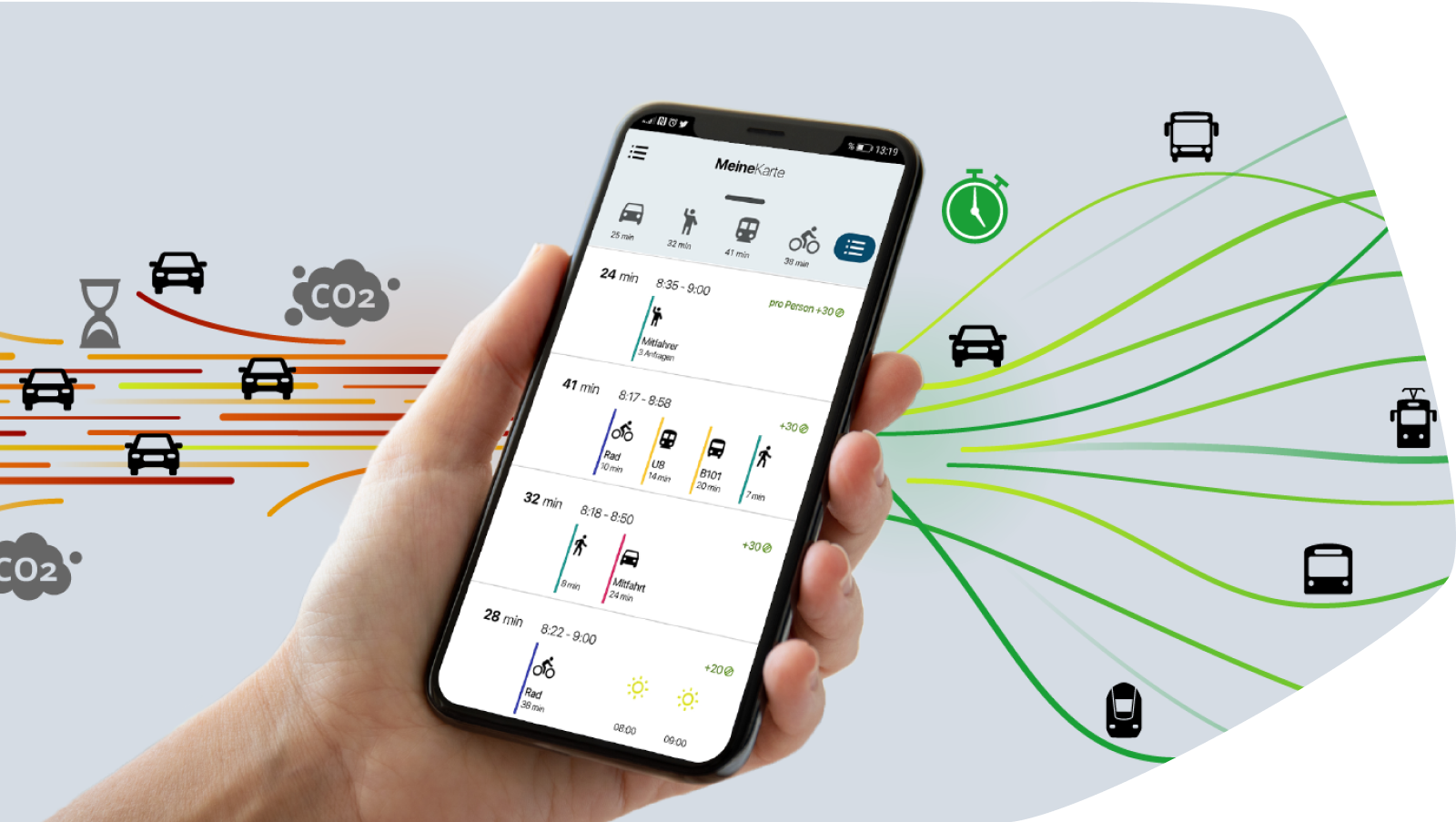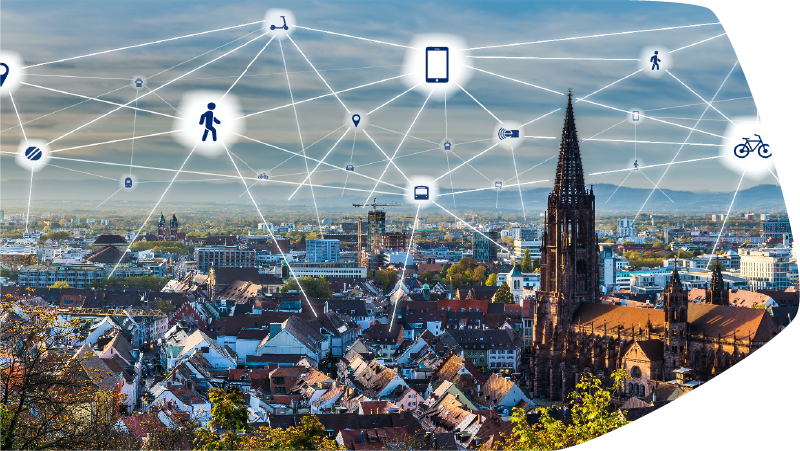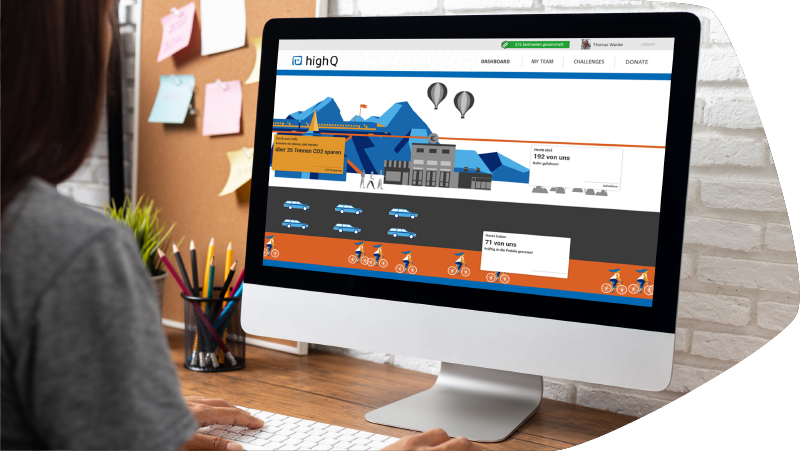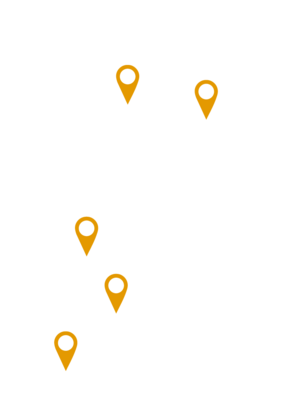

Isolated mobility providers instead of liquid transport
The challenge: transport on demand
People want to get from A to B spontaneously, safely and quickly - in the next five minutes and not tomorrow. Traditional public transport is often unable to provide this: scheduled services are associated with too many dependencies and waiting times, take detours or arrive too late. The solution for many: Transport on demand, i.e. on call. Such on-demand services are already a supplement to regular scheduled services, especially in rural areas, but often do not fully meet the needs of passengers because the route is thought of in individual sections rather than as a whole.
- On-demand offers are not networked with each other
- Travel planning is time-consuming and confusing
- scheduled transport is expensive, planning-intensive and not always efficient
- Customers are placing more and more value on customised transport

What is on-demand traffic?
Today, transport is dominated by motorised private transport and scheduled public transport.
In the future, mobility services will be supplemented by flexible on-demand transport, so-called "individual public transport".
This on-demand transport is nothing new in itself: passengers book it in advance and the bus then travels to their desired stop. A similar model also exists with call-and-collect taxis (AST) such as on-call taxis. Sometimes these call at the specified stops, in other models they even take the passenger to their own front door.

The requirement for on-demand traffic
It is not just people's need for mobility that will increase - there is also the need to be ecologically aware when travelling.
On-demand transport can fulfil this as a contribution to environmental protection more easily than the private car if, for example, electric vehicles are used or journeys are bundled.
What is important here is an attractive offer that satisfies ad hoc mobility behaviour:
Transport companies and mobility providers need to think in terms of entire transport chains rather than individual journeys, which requires connections to work. This is why planning across all modes of transport, including on-demand services, is becoming central and the focus is shifting to the journey sequence. Planning systems for public transport should be able to map on-demand transport planning. Thanks to simulation functions, transport can be optimally planned.
Seamlessly linking all transport services
- With our mobility platform highQ MobilitySuite, it is possible to map public transport, on-demand transport and other services such as car and bike sharing in a single system.
- Even small companies such as taxi providers can be easily connected to the digital transport platform.
- This increases the added value for passengers with a wider range of mobility options and smaller providers are also included in the timetable information.
Reach your destination easily

Plan & book a trip

Get on board and have a seamless overview of the entire route

Arrive environmentally conscious and stress-free
Would you like to organise the transport of your city or municipality in a future-oriented and individual way?

The advantages of on-demand traffic
Making urban and rural areas mobile
An on-demand service must work in all areas, in the city and in the countryside. For the latter in particular, one solution could be to bundle journeys and aim for shared journeys. These shared journeys save resources, are more effective and more environmentally friendly. At present, this is hardly ever the case overall - only rarely does a driver transport several passengers at the same time.
On-Demand helps with ...
- the equalisation of traffic flows
- the switch from car to public transport
- flexible integration of all mobility providers
- the promotion of environmentally friendly forms of mobility
- the organisation of urban and rural traffic

The future of traffic planning
Integrated transport concepts comprising scheduled services and individual on-demand offers
This will determine the future of mobility and make it possible to move away from motorised private transport towards more environmentally friendly solutions.
highQ has presented a portfolio of possible solutions here. Satisfying the mobility needs of passengers is a major task for local authorities and transport companies. This can be achieved with the support of smart technology.
More about the solutions for municipalities & cities More about the solutions for public transport companies
Let's shape the future of mobility together!
Do you have further questions about on-demand transport?
Thomas Wanke and his team will be happy to help you.






